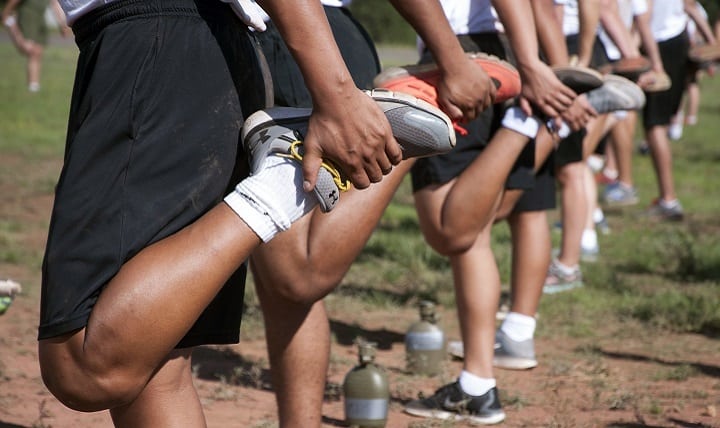A deload is a scheduled week (or more) off from regular training. Most deloads don’t have you stay out of the gym entirely, but instead, encourage you to lift lighter, usually something similar to doing singles, triples, or sets of 5 with 60-70% of your 1RM, or skipping the big three entirely and doing assistance work at a reduced rate (about half as many sets, and 10-15% lighter resistance). The goal of a deload is to give your body a break from the rate you’re usually training at, for a number of reasons:
- To reduce the likelihood of injury.
- To take a break and let the repeated bouts effect wear off.
- To give yourself time off after a difficult cycle and recover properly.
Are Deloads Necessary?
The problem with deloads is that I find they’re often introduced too early to trainees. Deloads are very useful for professional strength athletes, older lifters, lifters with a history of previous injuries, and lifters who have a ton of experience with programming their own cycles because they offer a means to continue training certain movements and generally engaging in active rest during times when the body clearly needs a break from normal training due to plateauing strength gains or general fatigue.
But for most trainees, deloads aren’t necessary, and they might be harming your progress because you’re doing them when you’re meant to be taking advantage of a good feeling. The following argument sums it up nicely: if your program has a scheduled deload, but you swing by the gym, warm up, and feel amazing, should you be continuing with your deload, or should you go for a heavier session?
The answer is subjective. More experienced trainees have a better sense of when they’re ready to approach a PR, and when they aren’t. They have a better sense of how much volume is too much volume for their current recovery, and they have a better sense of when they need to compensate for a really tough cycle with a deload lasting a week or two.
On the other hand, giving new trainees an arbitrary rule such as “deload every three to four weeks” is honestly a waste of time. Even Jim Wendler’s 5/3/1 program originally had this issue, addressing it by being more flexible and giving a variety of options for lifters to self-regulate (i.e. Joker sets when you’re feeling good, an optional deload every seven weeks instead of every three, the ability to swap the deload out for a repeat of week 2 or 6, and more).
Other programs try to give openings for optional deloads, such as suggesting a week off after a meet or mock meet, or programming in easier weeks between cycles to take advantage of the way the body adjusts to ramping intensity.
Should Deloads Be Scheduled?
Deloads are useful, but they need to be used properly to really make the best of them. Remember this: a deload is meant to be used when you’re no longer making progress, or when you’re feeling seriously beat up after an intense cycle of training. It shouldn’t really be thrown into your training arbitrarily unless you’ve recognized a pattern of injuries or breaks caused by getting sick frequently (i.e. if you’re catching a cold every two months, consider taking a week break every eight weeks).
Some people argue that deloads are a natural part of life, insofar that you’re going to be forced to take one eventually. This quarantine is a perfect example, wherein most of us are probably forced to take a month or two off from the gym. While we can continue to train at home, it’s not the same as training with a barbell (unless you have a full home gym).
This change in pace and training style isn’t the same as a deload (especially if you’re throwing yourself into achieving new calisthenics goals), but it can still benefit your training with a barbell because by the time you can switch back to powerlifting, the extended break will have given your body time off to “forget” what certain movements feel like, and after an adjustment period, you’ll find yourself likely making new PRs as a result of your break.
On the other hand, shorter breaks are also likely to occur outside of extreme circumstances such as a global pandemic. Some of us need to stop training over the holidays, or to go on a family vacation, or to visit our parents, or because we’ve got a lot of work to do. These little breaks are life’s own deloads, and to many, it doesn’t make much sense to try and schedule your own.
The exception being, as mentioned above, if you’re going extremely hard and need a break to give your body rest. The question is: do you trust yourself enough to make the judgment of whether you need rest, or just a lighter training week (i.e. not a deload)? That’s something you’ll have to answer on your own.
What Should a Deload Look Like?
A deload is not just a lighter training week – it’s a very light training week. It’s not giving up on the barbell and going for a PR marathon – it’s a light jog and some pushups. It’s not switching from heavy singles and triples to three to four bodybuilding pump sessions with all-out drop sets – it’s a few sets of three at 60% followed by three sets of ten reps on the machine, stopping long before failure. Deloads are meant to be kind of boring. But they should still let you work up a light sweat.
They’re meant to give your joints a break, give your neurons a break, give your muscles a break. They’re meant to lull your body into a false sense of “well, at least he’s not training like a maniac anymore”, so you can hit the gym hard in a week or two and make greater strength and hypertrophy gains than if you had just trained through, and risked injury or stalling.
I think deloads are a useful tool for intelligent lifters when they can determine that it’s time to take a break in preparation for greater gains. But they’re not useful for beginners, who are making constant gains, or intermediate lifters, who will continue to see gains on a linear program, or by switching between strength and hypertrophy blocks.
Want to lift heavier and avoid injuries? 💪🔥
Download our FREE '5-Minute Warm-Up Routine for Maximum Lifting Performance' and get primed for every workout!
Click below to grab your copy now!👇
👉 Download the Free Guide




